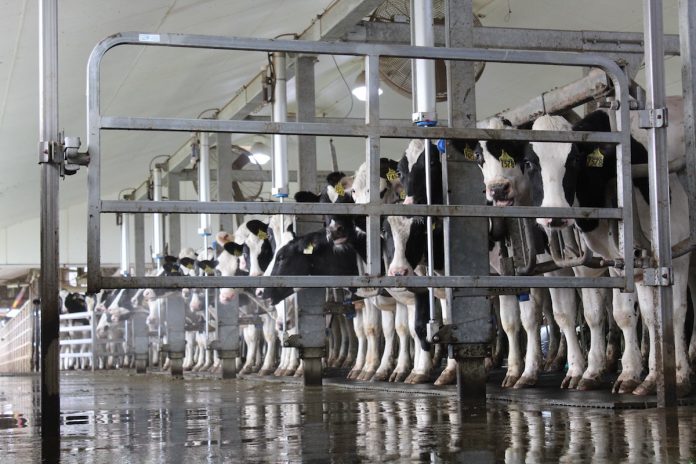The current 2022 U.S. Department of Agriculture all milk price for 2022 is forecast to be $19.20, which is higher the predicted all milk price of $18.50 for 2021.
While the all-milk price for 2022 is high, providing a flickering light in the tunnel, this doesn’t mitigate our need to use tools to protect our milk income. When selecting tools to protect our milk income, it is important to understand how milk is priced and how the risk management tool functions.
Pricing
The first step is reviewing how class I milk is priced. Class I milk is not traded on the board like Class III and Class IV milk. The first part is the Average of Advanced Class III (cheese) and Class IV (milk powder) Skim milk prices. After these two are averaged, a $0.74 fixed adjuster value is added.
The next step is to add a Class I Differential location base adjustment. This calculates the Base Class I Skim Milk Price. This means that the market value of both Class III and Class IV are important to producers, before factoring in the milk pooling that creates a statistically uniform price across producers who sell fluid milk, cheese production and other dairy products.
Class III and Class IV prices play an even bigger role when we factor in milk pooling, which uses the amount of each class of milk sold in the milk marketing order to calculate the pool price for marketing order. Then there is also the value of milk fat and protein to consider. This means these all need included in our risk protection plan.
Protection
The first step of risk management still should be the Dairy Margin Protection program, to protect our first 5 million pounds of milk historical basis with a $9.50 margin over feed price. Sign up at your local Farm Service Agency office for Dairy Margin Coverage began Dec. 13 and runs through Feb. 18.
The next layer to consider is Dairy Revenue Protection, through the Risk Management Agency. This program uses prices from the futures market through the agency to set a floor for your milk price at 95% or less of the futures price. One challenge I have heard with this program is that it is sold in quarter blocks with the contract period closing 15 days prior to the quarter beginning.
It also averages the quarter meaning if one month is high and the other two are low the average will not be high. This program is similar to buying a put option contract, but is subsidized and in a quarter block.
Since Ohio’s milk price has component of both Class III and Class IV futures, contracts should be considered in your risk management strategy along with component prices. One way of using this risk management strategy is to use your cost of production as the trigger for purchasing contracts to put a floor under your milk price.
Futures market
It can be helpful to consider how the futures market performed over the last 20 years to understand if Dairy Revenue Protection contracts by quarter, purchased at least 15 days before the start of the quarter are a good idea. While averages are not perfect, over the last 20 years there is almost a $2 difference between the high and closing value of both Class III and Class IV futures.
The range in this difference between the high and the close for Class III is $11.22 and for Class IV is $7.50. During this time, 45% of the time, Class III contracts were at their highest point for all months in the contract period during the purchase window for Dairy Revenue Protection contracts.
Class IV contracts highest point for all three months in the quarter occurred 56% of the time while contracts could be purchased. Only 20% of the time did none of the months in the quarter block have contract highs during the time a contract could be purchased.
While not as flexible as put options, the 44% premium subsidy makes these contracts more affordable, and based on historic information, even through they are in quarter blocks, they can make a great risk management tool.
It is always a good idea to use multiple risk management strategies to protect your farm profitability. After Dairy Margin Coverage and Dairy Revenue Protection you may also want to consider gross margin coverage or using the futures and options market through the board of trade, but the latter two are more risky tools to manage your risk.













